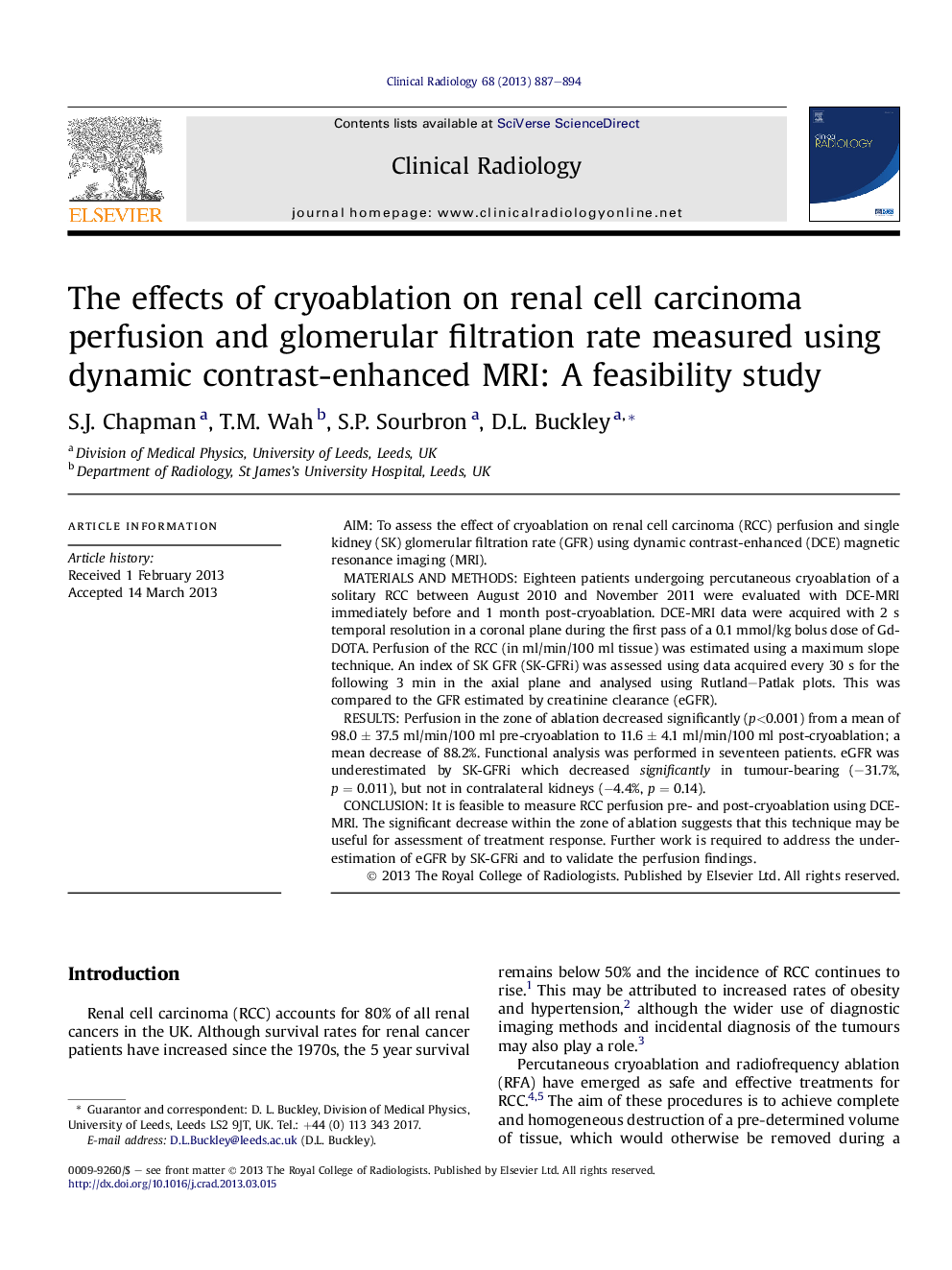| Article ID | Journal | Published Year | Pages | File Type |
|---|---|---|---|---|
| 3982548 | Clinical Radiology | 2013 | 8 Pages |
AimTo assess the effect of cryoablation on renal cell carcinoma (RCC) perfusion and single kidney (SK) glomerular filtration rate (GFR) using dynamic contrast-enhanced (DCE) magnetic resonance imaging (MRI).Materials and methodsEighteen patients undergoing percutaneous cryoablation of a solitary RCC between August 2010 and November 2011 were evaluated with DCE-MRI immediately before and 1 month post-cryoablation. DCE-MRI data were acquired with 2 s temporal resolution in a coronal plane during the first pass of a 0.1 mmol/kg bolus dose of Gd-DOTA. Perfusion of the RCC (in ml/min/100 ml tissue) was estimated using a maximum slope technique. An index of SK GFR (SK-GFRi) was assessed using data acquired every 30 s for the following 3 min in the axial plane and analysed using Rutland–Patlak plots. This was compared to the GFR estimated by creatinine clearance (eGFR).ResultsPerfusion in the zone of ablation decreased significantly (p<0.001) from a mean of 98.0 ± 37.5 ml/min/100 ml pre-cryoablation to 11.6 ± 4.1 ml/min/100 ml post-cryoablation; a mean decrease of 88.2%. Functional analysis was performed in seventeen patients. eGFR was underestimated by SK-GFRi which decreased significantly in tumour-bearing (–31.7%, p = 0.011), but not in contralateral kidneys (−4.4%, p = 0.14).ConclusionIt is feasible to measure RCC perfusion pre- and post-cryoablation using DCE-MRI. The significant decrease within the zone of ablation suggests that this technique may be useful for assessment of treatment response. Further work is required to address the underestimation of eGFR by SK-GFRi and to validate the perfusion findings.
